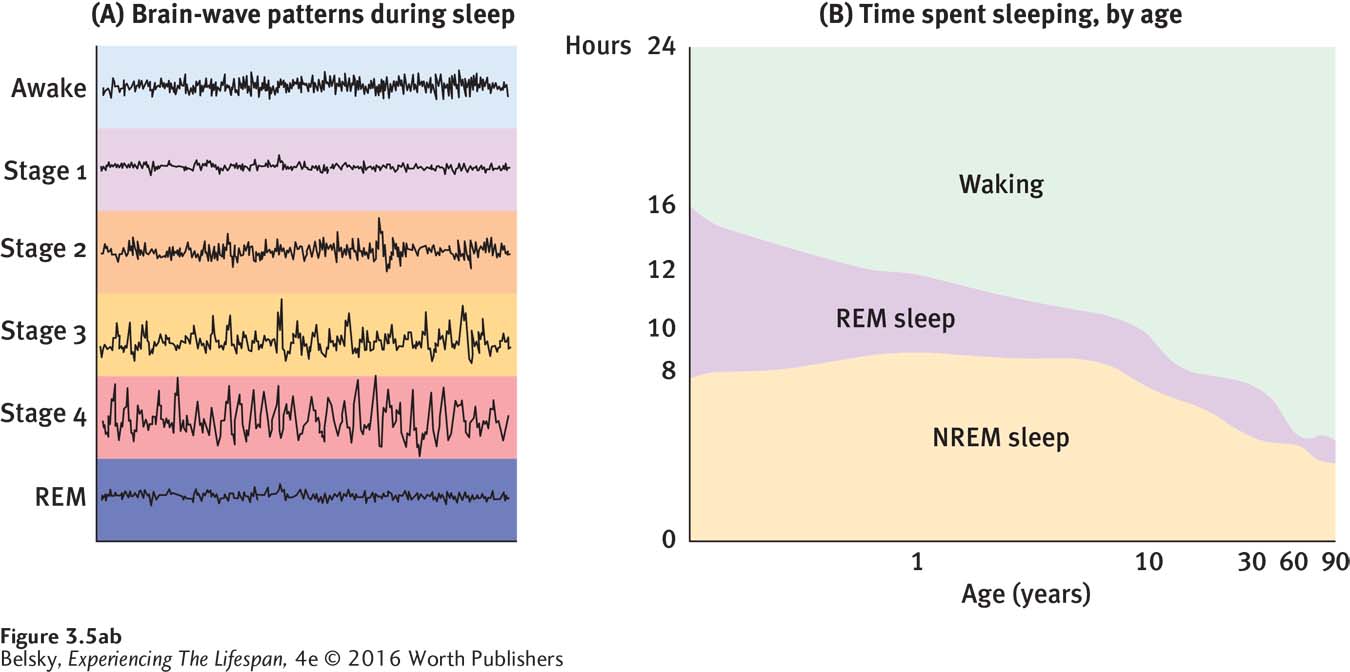
Sleep brain waves and lifespan changes in sleep and wakefulness: In chart A, you can see the EEG patterns associated with the four stages of sleep that first appear during adolescence. After we fall asleep, our brain waves get progressively slower (these are the four stages of non-
Adapted from: Roffwarg, Muzio, & Dement, 1966.